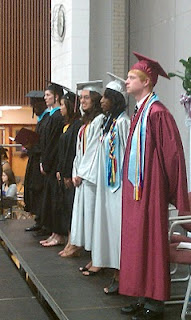 This week, the Virginia League of Conservation Voters release their 2010 Legislative Scorecard. I am honored to have received a 100% rating and to be named a 2010 Conservation Hero. Below is my press release regarding the Scorecard and award.
This week, the Virginia League of Conservation Voters release their 2010 Legislative Scorecard. I am honored to have received a 100% rating and to be named a 2010 Conservation Hero. Below is my press release regarding the Scorecard and award.June 30, 2010
*****FOR IMMEDIATE RELEASE*****
Contact: Christopher Bea, Legislative Assistant
DelSSurovell@house.virginia.gov
Delegate Scott Surovell was named a “2010 Conservation Hero” by the Virginia League of Conservation Voters in recognition of his support of conservation issues during the 2010 legislative session. “Virginia’s natural resources are one of our most vital assets and we have a responsibility to keep the Commonwealth clean and beautiful” said Surovell. Surovell was one of eighteen delegates to receive a 100% rating from the VALCV.
The VALCV was founded in 2000 as a non-partisan political voice for the Commonwealths conservation community. "In his first year at the General Assembly, Delegate Surovell has shown great commitment to protecting our land, air and water," said Lisa Guthrie, Executive Director of VALCV. "He has already demonstrated leadership by introducing innovative energy legislation that shows great promise for the future."
Surovells 100% rating reflects his votes on issues ranging from air quality to off-shore oil drilling. “Virginia and the nation as a whole is faced with critical decisions regarding energy and the environment,” said Surovell. “It is an honor to be recognized by the VALCV.” Surovell has long been active in conservation advocacy, having worked with the Natural Resources Defense Council and as a volunteer at Huntley Meadows Park.
House Bill 833, introduced by Surovell was one of the pieces of legislation VALCV used to in its scoring. Home energy audits are exploding in popularity due to heightened awareness, increased energy costs, and government incentives to encourage home energy efficiency. There are currently no government standards regarding what constitutes a home energy audit or any standards governing the profession. HB 833 created a system of regulation for home energy auditors and was supported by both industry and conservation groups. “HB 833 represents an important step forward for home energy efficiency, and I intend to bring the issue up again in 2011.”
Looking ahead, Surovell stated, “I appreciate the work the VALCV does in preserving and enhancing quality of life for all Virginians. I look forward to working alongside them as we defend Virginia’s natural beauty.” Surovell recently organized a community cleanup of Quander Brook, along U.S. 1 in Alexandria, removing truckloads of trash and debris from the stream. “Whether at the community level, or in Richmond, I am committed to conserving and protecting Virginia’s environment,” said Surovell. “Green technology and energy efficiency is the future and I look forward to working with the Virginia business community making Virginia the leader of green industries.”
























